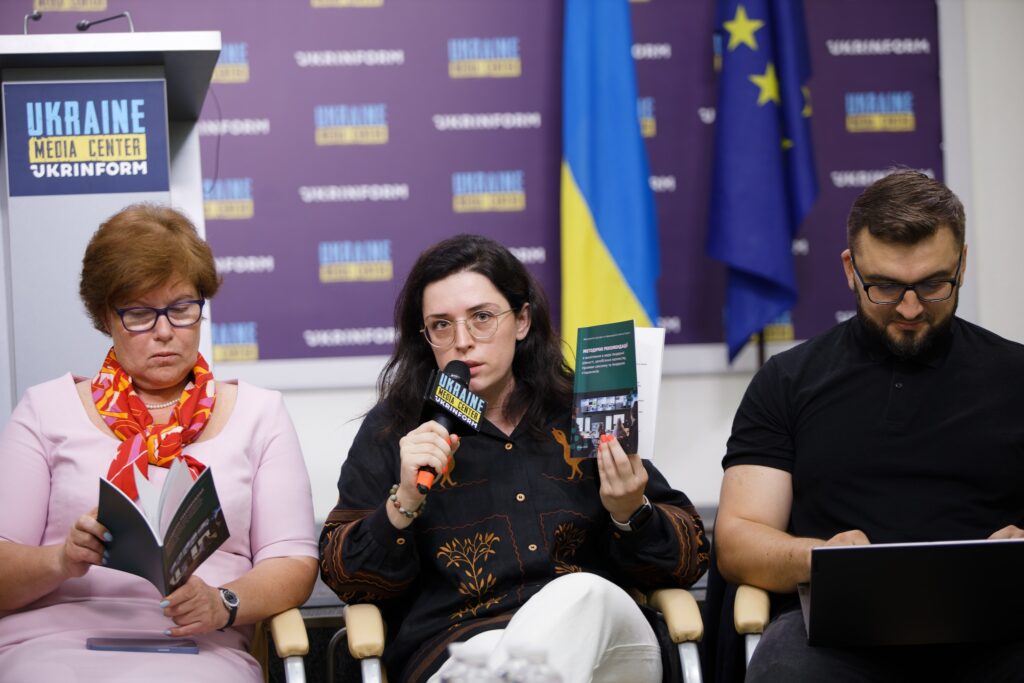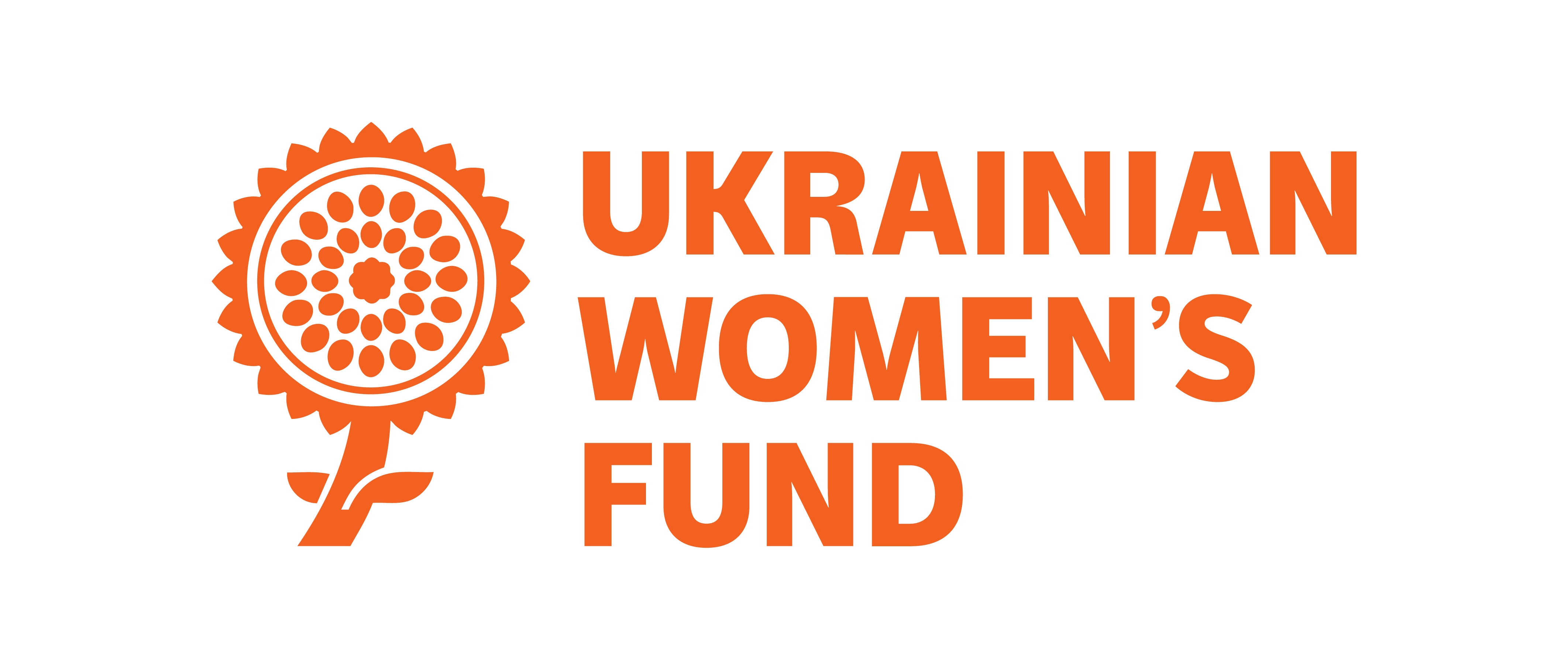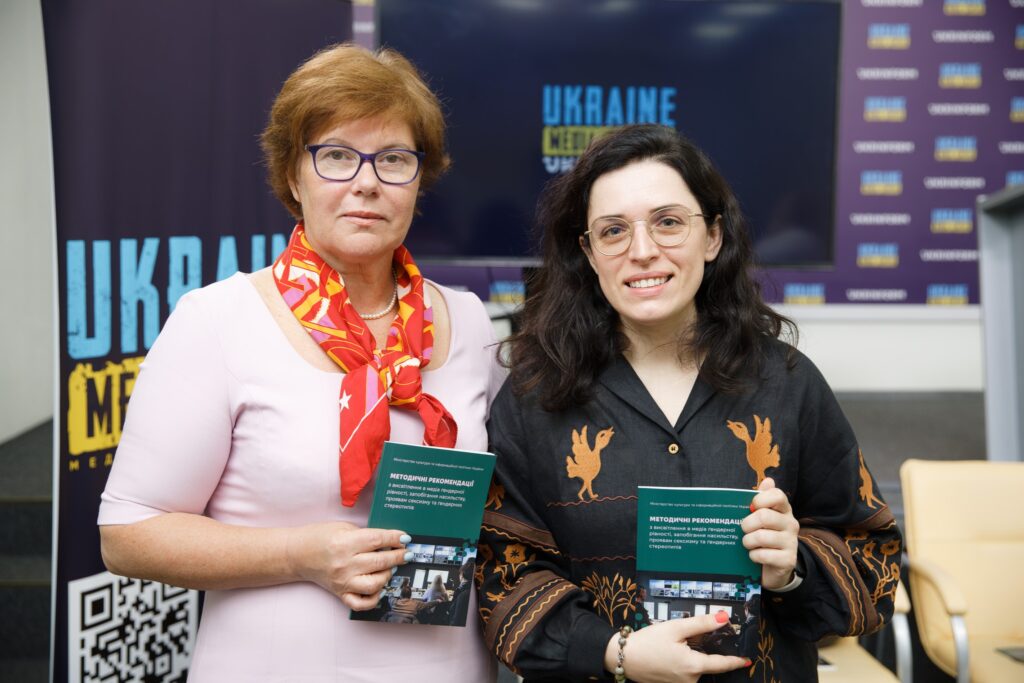“At the time, there were no official state documents regulating how to cover these topics — everything relied on self-regulation. That is why we formulated clear guidelines on how to write about conflict-related sexual violence (CRSV), as well as domestic and gender-based violence. The initiative came from the grassroots, that gained support at all levels,” says Liza Kuzmenko.
These Guidelines were approved by the Order of the Ministry of Culture and Information Policy of Ukraine No. 333 of June 16, 2023.
The methodological guidelines were the first to provide direction on how to more effectively cover topics related to gender equality.
“For the first time in Ukraine, national gender equality indicators in the media were introduced at the level of a regulatory document. For example: what proportion of media companies are owned by women, who holds leadership positions, whether there is a dedicated budget for anti-sexism initiatives.
 As for content coverage, the guidelines include a dedicated section with practical recommendations on how to cover topics correctly: conflict-related sexual violence, domestic and gender-based violence, combating sexism, and the portrayal of women and men in media content,” says Liza Kuzmenko.
As for content coverage, the guidelines include a dedicated section with practical recommendations on how to cover topics correctly: conflict-related sexual violence, domestic and gender-based violence, combating sexism, and the portrayal of women and men in media content,” says Liza Kuzmenko.
The Guidelines emphasised the importance of adopting an editorial policy on non-discrimination and gender equality. Bringing this recommendation closer to implementation — specifically by developing a model Gender Equality Policy in Media Content — was made possible by the NGO Women in the Media in partnership with the Commission on Journalism Ethics, a body of self-regulation of journalists and editorial offices in Ukraine.
This Policy is a guideline — it shows what should and shouldn’t be done. Any type of media outlet, regardless of how it distributes content, can adopt it and either fully or partially integrate it into its internal documents. We managed to transfer key principles from the Guidelines into the Policy — particularly on how to cover domestic and gender-based violence, and sexual violence. This includes the importance of using the Global Code of Conduct for Gathering and Using Information about Systematic and Conflict-Related Sexual Violence (Murad Code) and the Media Interaction Protocol by SEMA,” says Liza Kuzmenko.
The list of media outlets, that have implemented the gender equality policy is as follows: Ukrainska Pravda, Espreso, Hromadske Radio, Livyi Bereh, Kyiv TV Channel, Channel 5, Starlight Media group, and Detector Media.
“What does this mean in practice? For example, when journalists are preparing a piece on CRSV, they should consult human rights organisations, include contact information for shelters in the material, and issue a content warning for sensitive topics. At the same time, when the editorial team is joined by a new person, instead of explaining all the principles from scratch, they can simply provide the policy document that outlines the standards the media outlet follows in its work,” explains Liza Kuzmenko.
Among the media outlets that have adapted the gender equality policy is Hromadske Radio.
“Hromadske Radio approved its initial gender policies back in 2022, just before the start of the full-scale invasion. But once the large-scale war began, the working conditions for media changed and became more difficult. We had to learn new skills and adapt to new realities. The gender equality policies developed by the NGO Women in the Media and the Commission on Journalism Ethics are comprehensive and respond to today’s challenges. They include guidelines for working with victims of sexual violence during wartime. Many of these practices we at Hromadske Radio had already been applying independently, but now we’ve formalised them into structured policies. This means we’re taking responsibility for upholding every provision in the gender policies. Hromadske Radio has always upheld the principles of equality — we’ve launched many projects dedicated to women in the military, our modern-day heroines. We strive to ensure equal representation of women experts on our broadcasts. And unfortunately, our work also involves covering the stories of people affected by the armed conflict, so it’s crucial to use gender-sensitive language and avoid retraumatising our guests — both men and women. These non-retraumatisation principles outlined in the gender equality policy are extremely important for media operating in wartime conditions,” says Viktoriia Yermolaieva, Hromadske Radio Editor-in-Chief.
The implementation of guidelines on gender equality in the media is not a formality — it is a step toward a responsible standard of journalism. Thanks to such initiatives, media outlets become more attentive to sensitive issues, and content becomes safer and of higher quality for all audiences.
The material was produced in framework of the Action “Network of gender think tanks: capacity development for advanced policy design, impact assessment, strategic advocacy, and specialized policy communications” implemented by the Ukrainian Women’s Fund with the support of the European Union. Contents of the publication are the sole responsibility of UWF.

